you know the story: a mere 240 km from the world-renowned metropolis of kununurra you find the amazing oasis that the bungle bungle caravan park is.
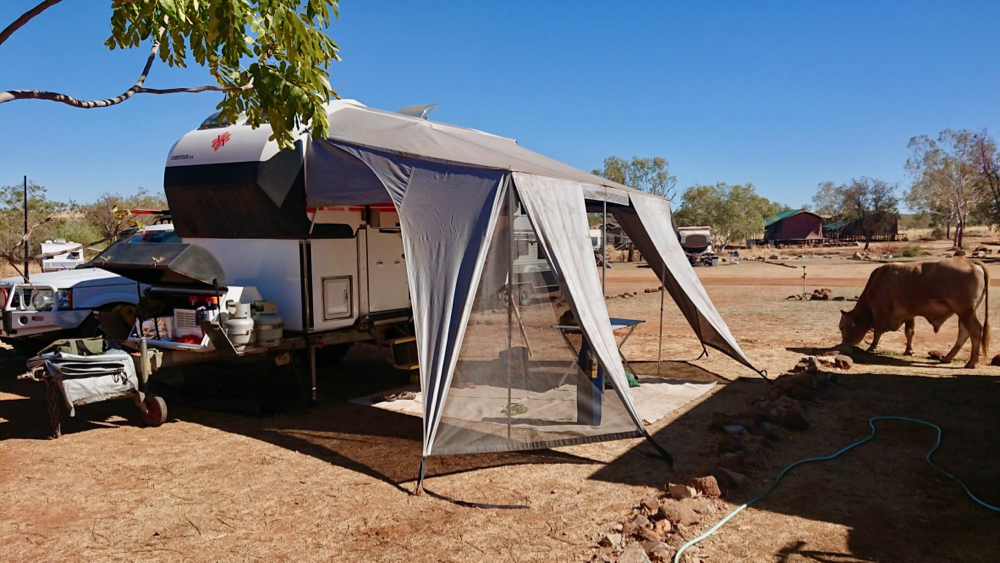
here is just what we mean by oasis: the cows eat the trees (and whatever else they find in the park).
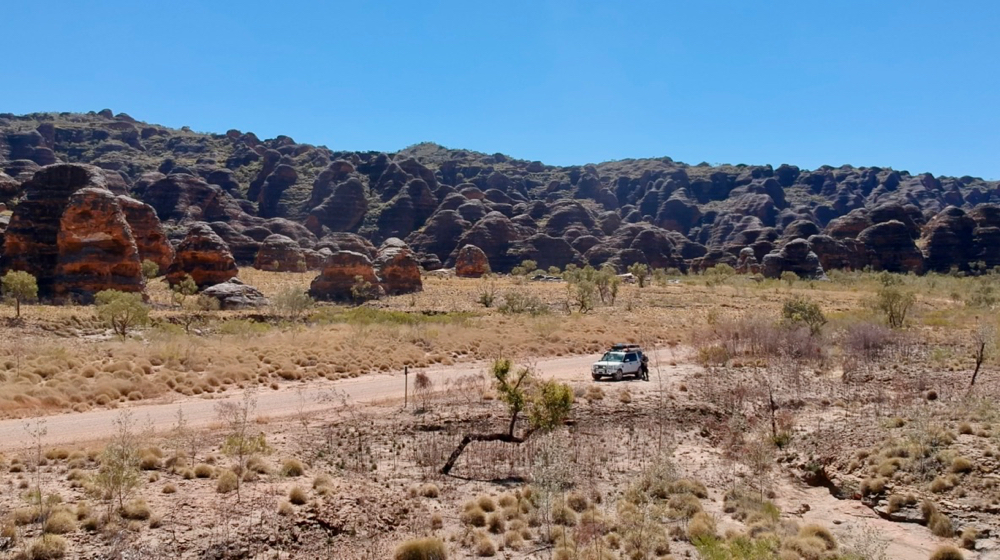
and from there it is only 50 km on some of the less well developed (i.e. partially downright horrible) outback roads to the purnululu visitor center, where they ask all visitors to report so they know if someone is lost in the park (i’m not sure how they square up their numbers because they don’t ask people to de-register when they leave …).
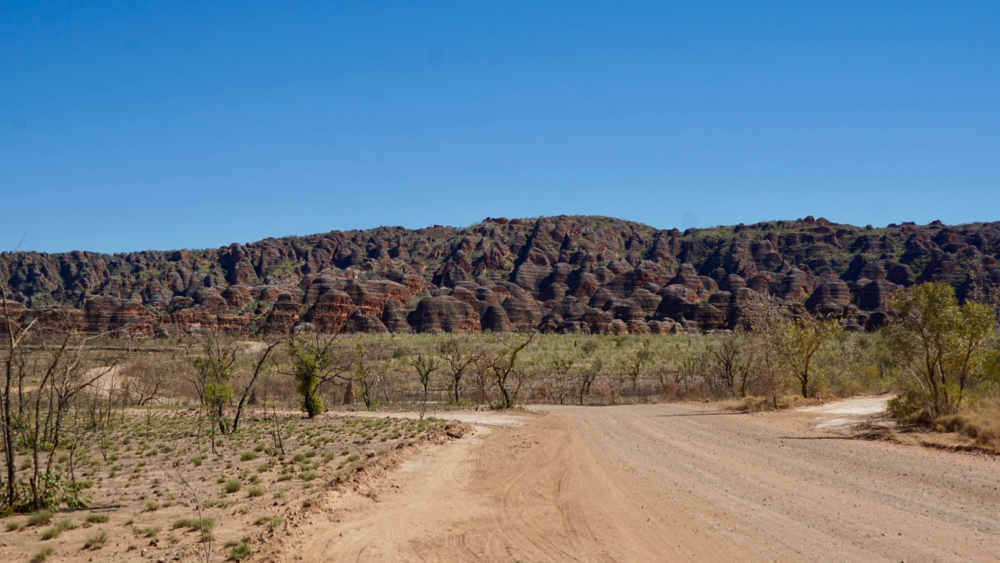
and then it’s just another 25 km to the south end and later another 25 km to the north end – of course you’ll have to drive it all back. quite a round trip. but once there it is clear why this national park has been world heritage listed.
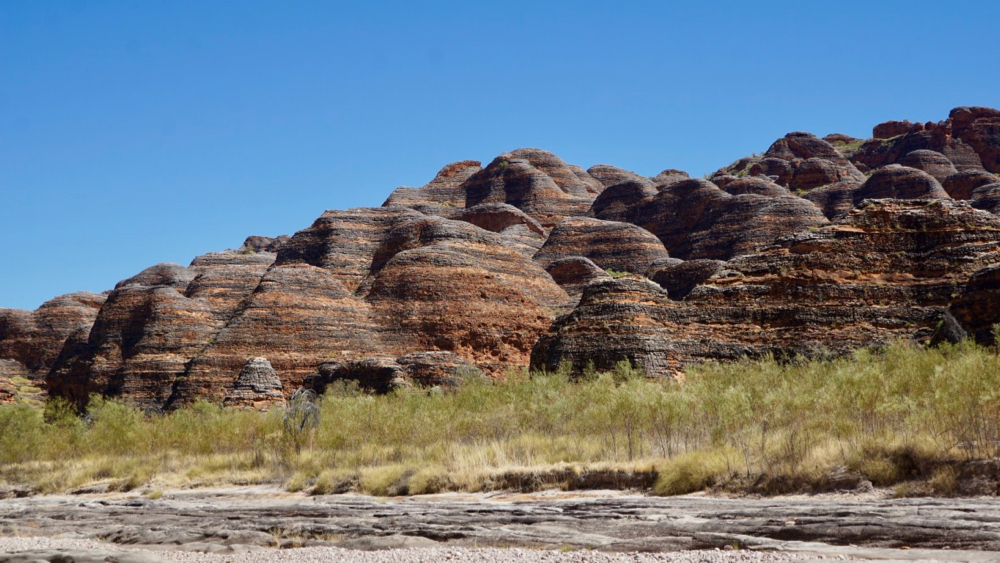
they say these are the most stunning examples of cone karst anywhere in the world, and i would have to agree, at least on the point that they are truly stunning (i have yet to see any other examples of cone karst).
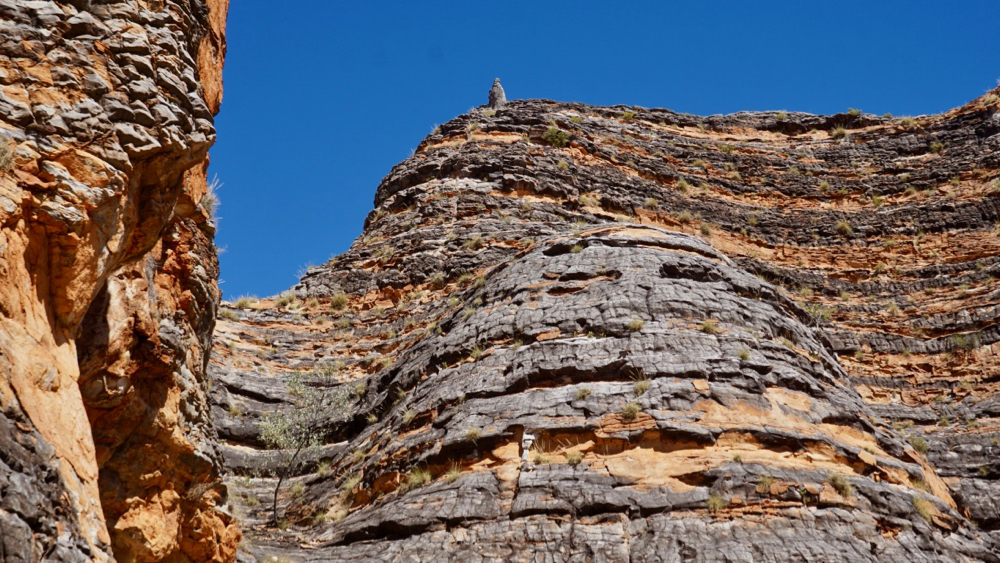
again, the sandstone material that built the range was deposited about 300 years ago into a plateau. it has to be said, though the the famous beehive formations only occur on the south end of the range.
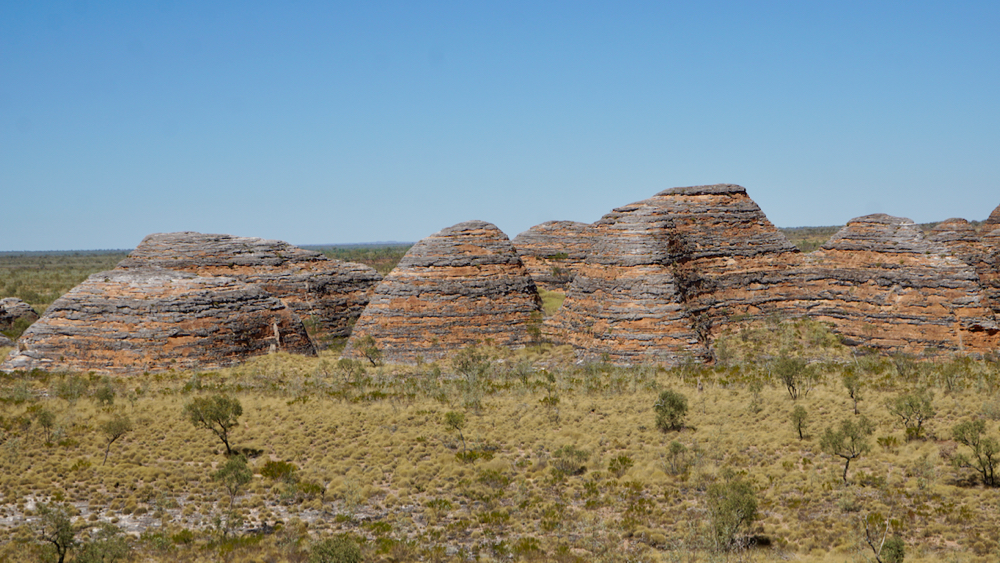
they also have these amazing bands, the dark parts being due to cyanobacterial crusts that form on the layers with lesser iron oxide because they retain moisture for longer. in between are the orange ‘rust’ bands.
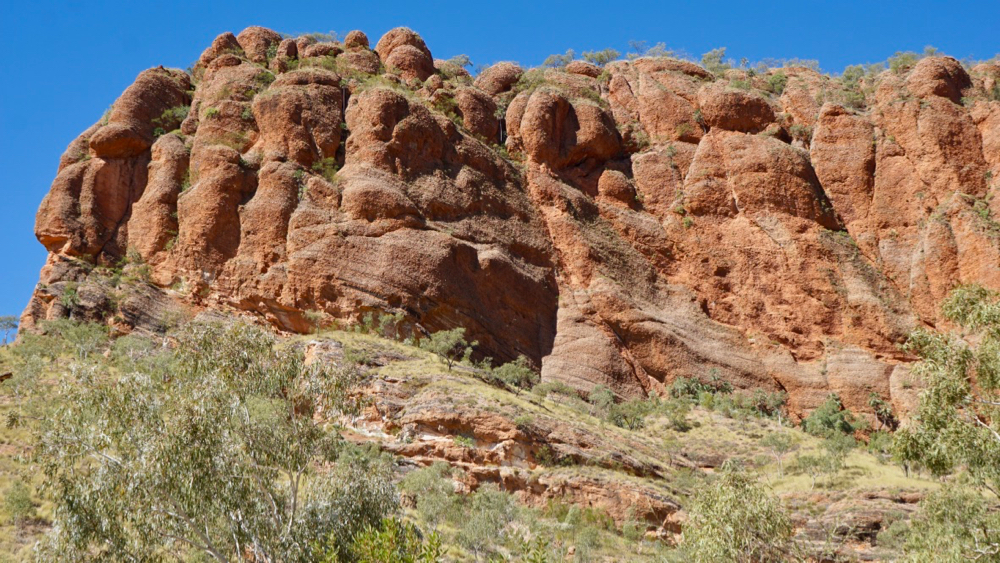
the north end of the range is not carved into the same cone shapes, but is more of a sheer cliff face, with deep chasms, the most famous of them being echidna chasm.
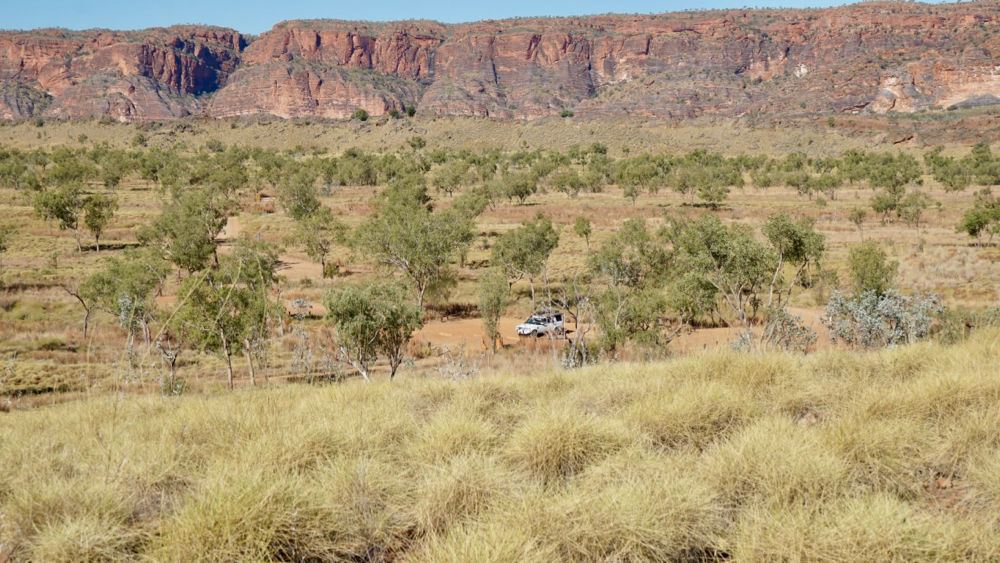
the stone is a similar sandstone, however, it is interspersed with bigger round stones.
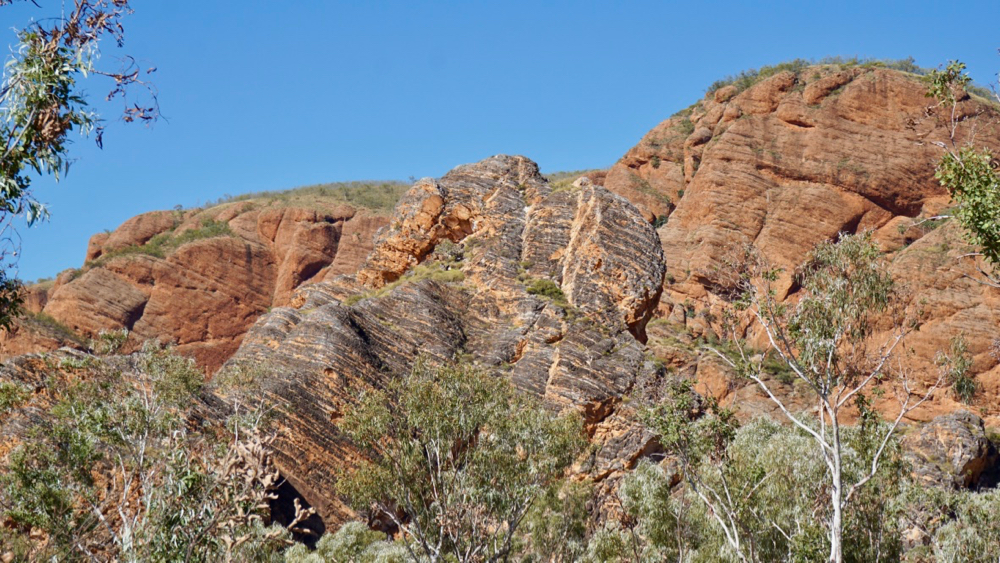
these apparently stem from a river system which rounded these stones and deposited them in the sand. that later got compressed into the stony range we see today. the red colour is of course due to the iron oxide in the rock walls.
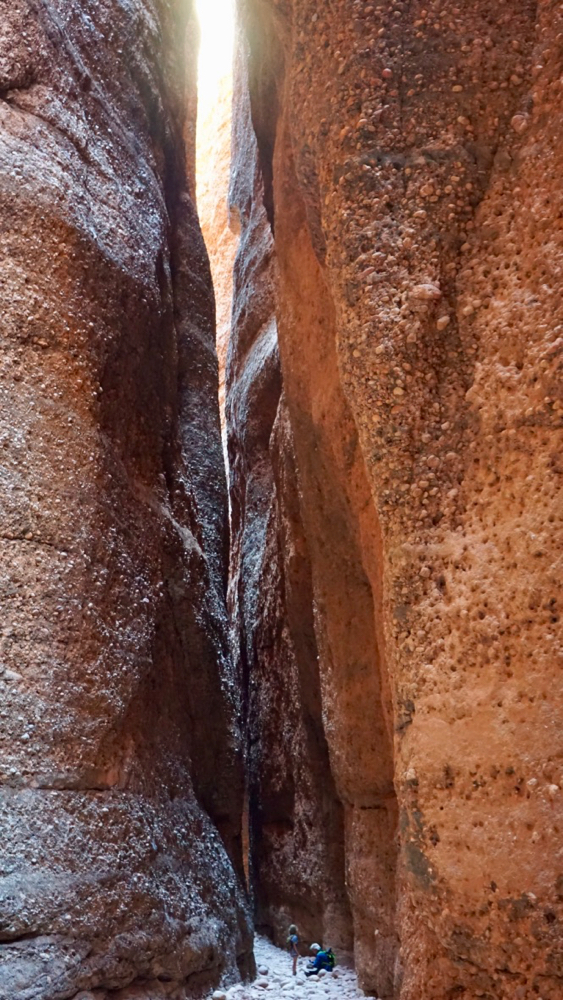
echidna chasm is indeed amazing in how long, high and narrow it is. check the picture above. you can also clearly see the stones embedded in the walls.
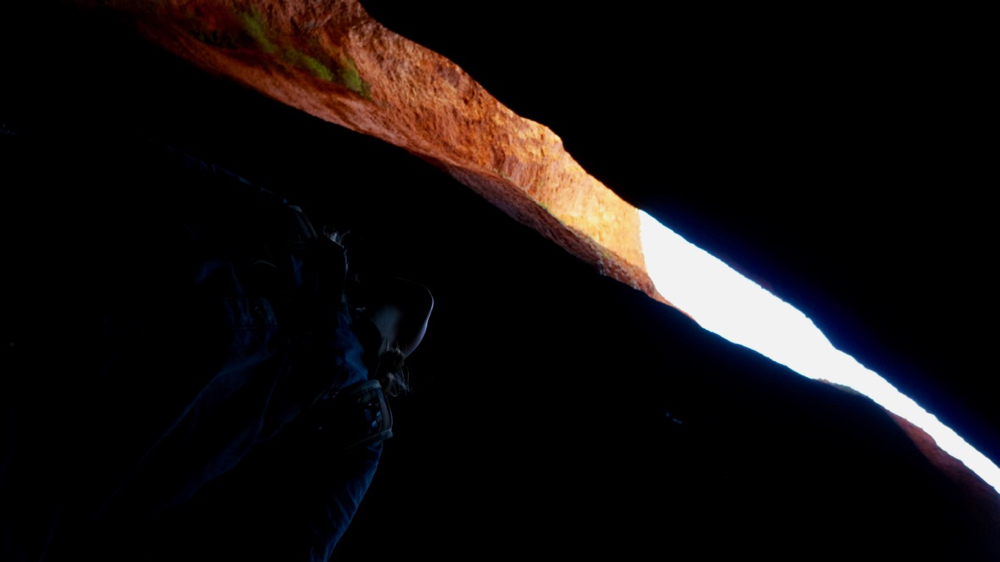
the other great feature of both cathedral gorge and echidna chasm is that they are cool during the heat of the day. to put this in perspective: it is winter and we have 30 degrees and sunshine every day. we also get 10 degrees at night so a really thick blanket and / or a good sleeping bag are very welcome.
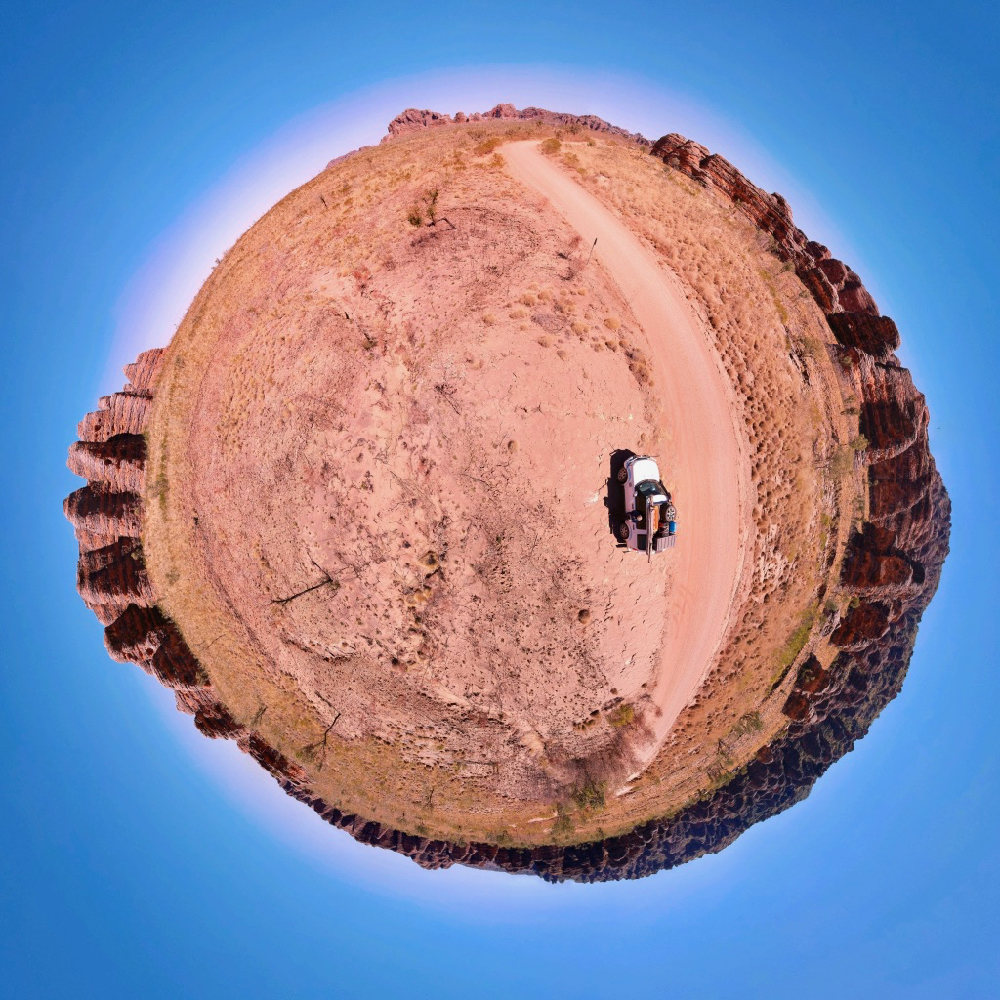
another tiny planet – karst cones!
and a bit of a video as well – go multimedia.
